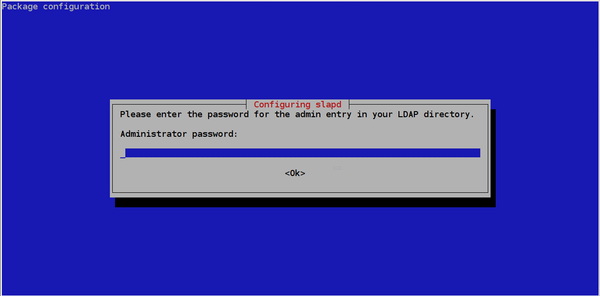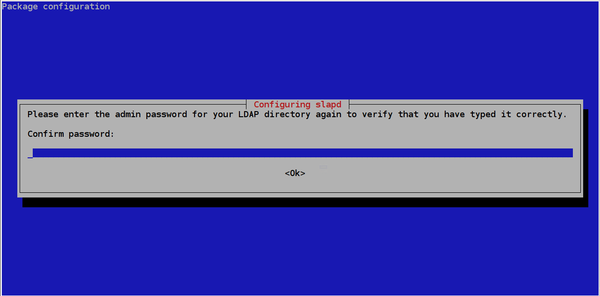Difference between revisions of "Debian LDAP Server Installation"
From Supercomputación y Cálculo Científico UIS
| Line 28: | Line 28: | ||
{{Command|slapcat}} | {{Command|slapcat}} | ||
| − | + | == Adding a New Directory Branch == | |
| − | + | 1) Edit a file named base.ldif and add the following lines: | |
| + | |||
| + | {{File|base.ldif| | ||
# create new | # create new | ||
| Line 41: | Line 43: | ||
objectClass: organizationalUnit | objectClass: organizationalUnit | ||
ou: groups | ou: groups | ||
| + | }} | ||
4.2) Agregue con el comando | 4.2) Agregue con el comando | ||
ldapadd -x -D cn=admin,dc=uis,dc=edu,dc=co -W -f base.ldif | ldapadd -x -D cn=admin,dc=uis,dc=edu,dc=co -W -f base.ldif | ||
Revision as of 21:28, 25 August 2014
Debian LDAP Server Installation
1) Install the following packages
apt-get install slapd ldap-utils
2) Configure LDAP. Debian installation scripts show a window where you can configure some parameters
Set the LDAP administrator password
Retype the password
NOTE: A new LDAP object is created (admin). The DN of this object is composed by its name (admin) plus the DNS domain of the LDAP server.
3) You can test the server executing the following command:
slapcat
Adding a New Directory Branch
1) Edit a file named base.ldif and add the following lines:
File: base.ldif
{{{2}}}
4.2) Agregue con el comando
ldapadd -x -D cn=admin,dc=uis,dc=edu,dc=co -W -f base.ldif


